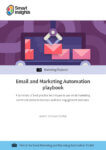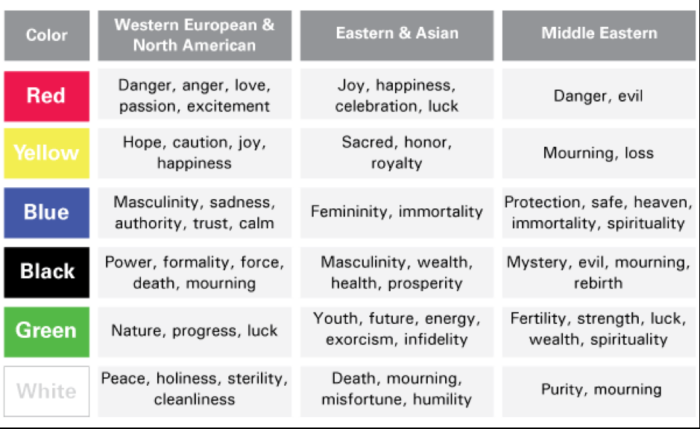Email localization goes beyond content translation. Here’s how you can build customer trust and engagement in countries other than your own, using email localization
Contrary to popular belief, email marketing is not dead. In fact, there are over 280 million emails being sent on a daily basis, meaning emails are an international phenomenon.
Today, most companies have a global database of recipients, which allows them to promote their services to a larger platform, helping to boost their sales.
Unfortunately, only 19.36% of retail emails are ever opened, which is significantly below average when compared to other types of emails that achieve an open rate of 26%.
Why is this?
Download our Premium Resource – Email and Marketing Automation playbook
By reading this playbook and assessing your performance across 20 key activities, you'll be able to identify potential areas of improvement and put a strategy together to improve your email marketing campaigns.
Access the Email and Marketing Automation playbook
One possible reason is that retail companies are unable to create a localized experience for their global target audience, which goes beyond merely addressing the recipients by their name.
As only 25% of companies keep in mind the regional preferences of their customers during content creation, there is obviously a need to spread awareness about localization.
Here are a few stats to prove that:
- Only 30% of the world’s 2.3 billion internet users are native English speakers.
- 55% of customers prefer to make a buying decision only if the product description is in their native language.
- Customers with low English skills are 6X less likely to buy from Anglophonic online sites.
- Every $1 invested in localization results in an ROI of $25.
Imagine your Spanish-speaking subscribers ignoring your sales newsletters in English and clicking through the ones in their native language from your competitors. Sounds like a missed opportunity, doesn’t it?
To excel in email localization, you should focus on the following four elements.
1. Copy considerations
The first step toward engaging your audience across the globe is to overcome the language barrier. Google Translate is not a solution for that.
Instead, make writing multilingual copy a mandate for your email campaigns. Build a team of native writers, depending upon the geographies you serve, to do that.
There are three things to be considered in a copy:
Messaging
Sephora’s welcome newsletter content exemplifies how major copy checks in different languages can make a difference.

The American newsletter keeps it casual by sticking to a brief about what the subscriber can expect in the coming weeks and shares links to their online store and Beauty Insiders club.
The Italian version, on the other hand, has a detailed welcome message, promotes an ongoing offer and shares social media links. You will notice how the majority of the product categories are actually in Italian.
The main aim of the newsletters is to welcome a new subscriber. Both versions do that but with different messaging.
For instance, Western culture encourages being direct in a conversation. In case of a disagreement, everyone’s views are clearly communicated and taken into consideration. However, in the African culture, expressing one’s opinion to an elder and directly disagreeing is considered to be an act of disrespect.
Subject line
Want to pitch your target audience in their native language? Keep your subject line short and simple. What may occupy 50 characters in English can take up more than 80 characters in a different language.
For example, “Try our new product” in English is four words. In Japanese, the same is "私たちの新しい製品ラインを試してみてください" while in German it is "Probieren Sie unser neues Produkt aus". You need to take this into account and create different subject lines for different languages.
Call-to-Action (CTA)
Just like subject lines, CTAs can also become longer when translated into another language and this can pose a problem from a design perspective. Therefore, use those words that are not only widely accepted in the target country but also fit aesthetically in the email.
2. Website and email aesthetics
To deliver an impactful localized email campaign, focusing on the following elements apart from the text is essential:
Visuals
An average American customer will be okay looking at bikinis in a newsletter but the same is considered offensive in the Middle-East.
Similarly, if your email contains images from a beach and it is targeted for a landlocked country, it won’t do justice to your subscriber’s imagination.
Therefore, avoid imagery that may instigate a negative or no response from some parts of the world.
Colour palette
Colour is perceived differently across the globe. While white is associated with purity and holy matrimony in the US, it represents death in India. Use colours that appeal culturally to the target country.
McDonald’s around the globe uses different color palettes for each country. For example, in India, where red is an auspicious color, their website uses a saturated hue of the colour in the background as compared to other country sites where it is used only as an accent color.
Therefore, identify what different colours and imagery mean to a target country and build your visual content around that.
3. Timing matters
Sending an email with an excellent offer when it is too late for someone to use that offer is never a good idea. That’s what La Tasca, a UK-based Spanish Tapas restaurant, did. They sent an email, offering 40% off all day Sunday, to their subscribers.

Unfortunately, the email blast happened on the day of the offer, at 10:39 PM. The delay was due to a technical error but the incident teaches a lesson to companies and marketers - 'time is of the essence.'
When it comes to sending emails abroad, you should factor in seasonality and work schedules for an effective campaign. Imagine sending a winter sale email to your target audience in Australia when they are busy enjoying summer.
Do your research. You don’t want to be ridiculed only because your treatment towards Australian and American markets was not different.
4. Selecting a local translator
Finding and working with a local translator can be difficult but the results are definitely worth the effort.
Here’s what you need to keep in mind:
Look for the experienced
When hiring translators, look for people with extensive experience in translating content in your industry. If you plan to do email campaigns in Poland, then your translator should be familiar with the Polish language and ITU law.
Ask for their portfolio
Ask for previously translated or sample works and get them cross-checked by a native speaker.
Multiple translators may make it worse
To avoid chaos, work with only one translator to maintain consistency across multiple digital platforms. Too many translators mean too many opinions and that can put you in a state of frenzy.
Sharing a context is always helpful
Giving context about the email campaign to your translator will help them in writing effective copy. Share the email template with the person so they can see how much space they have for adjusting the length of the copy.
Lastly, educate them about the brand guidelines, style of writing, message tonality and more for the faster turnaround of error-free work.
Email campaigns are time-bound and you should make sure your content and localization teams are working in sync to meet deadlines.
Human Translators vs Machine Translators
Context is a crucial part of the translation. Which means that the context should be preserved when the copy is being translated. Additionally, the culture of geographies vary based on the countries being targeted. This means words, dialect, colours, symbols and visuals can all have different meanings in different countries.
Let’s compare machine translation and human translators.
While machine translation is cheaper (or free – such as Google Translate) and quicker, it has several disadvantages. Machines cannot translate the sentence structure. They analyze the structure, break down the sentence and translate each word. Then, they compose the sentence in the same syntax. Further, the translation is literal and word-to-word. The translated content thus may not sound natural and could include grammatical errors.
Human translators, on the other hand, have an upper hand over machines due to their ability to process all possible sentence structures and relevant words to reach a particular context. They localize the text based on the regional dialect, culture, grammar and norms.
Machine translation is preferred to translate general meaning content, content for the company’s internal purpose and when it is further going to be refined by a human translator.
Human translators are advisable when the content would be received by the consumer audience, including marketing and creative material, as well as for topics like healthcare, medical guidelines, clinical trials, legal and financial documents and product instructions.
Google Translate would help you assess the response from new geography, but when you’re launching a brand, hire human translators to localize your content to the native language.
Over to you
The number of non-native English speakers continue to rise. Sadly, 58% of small businesses don’t localize their emails for international audiences and instead take the one-size-fits-all approach.
The overall value offering of the product or service can be affected negatively if the messaging doesn’t appeal to the target audience. By sending localized emails, you open doors to communicate with people in their own language, which consumers will like and appreciate.
Localization improves customer experience, increases engagement and boosts subscriber loyalty for any brand.
You will be able to grow your business through localized email marketing faster.
Alpi Mantry is the co-founder and COO of
Translate by Humans, a professional language service provider that delivers all services by native language experts and never through artificial intelligence. They’ve handled translation and localization for global brands such as Google, Nike, Vogue, and Deloitte to name some.











